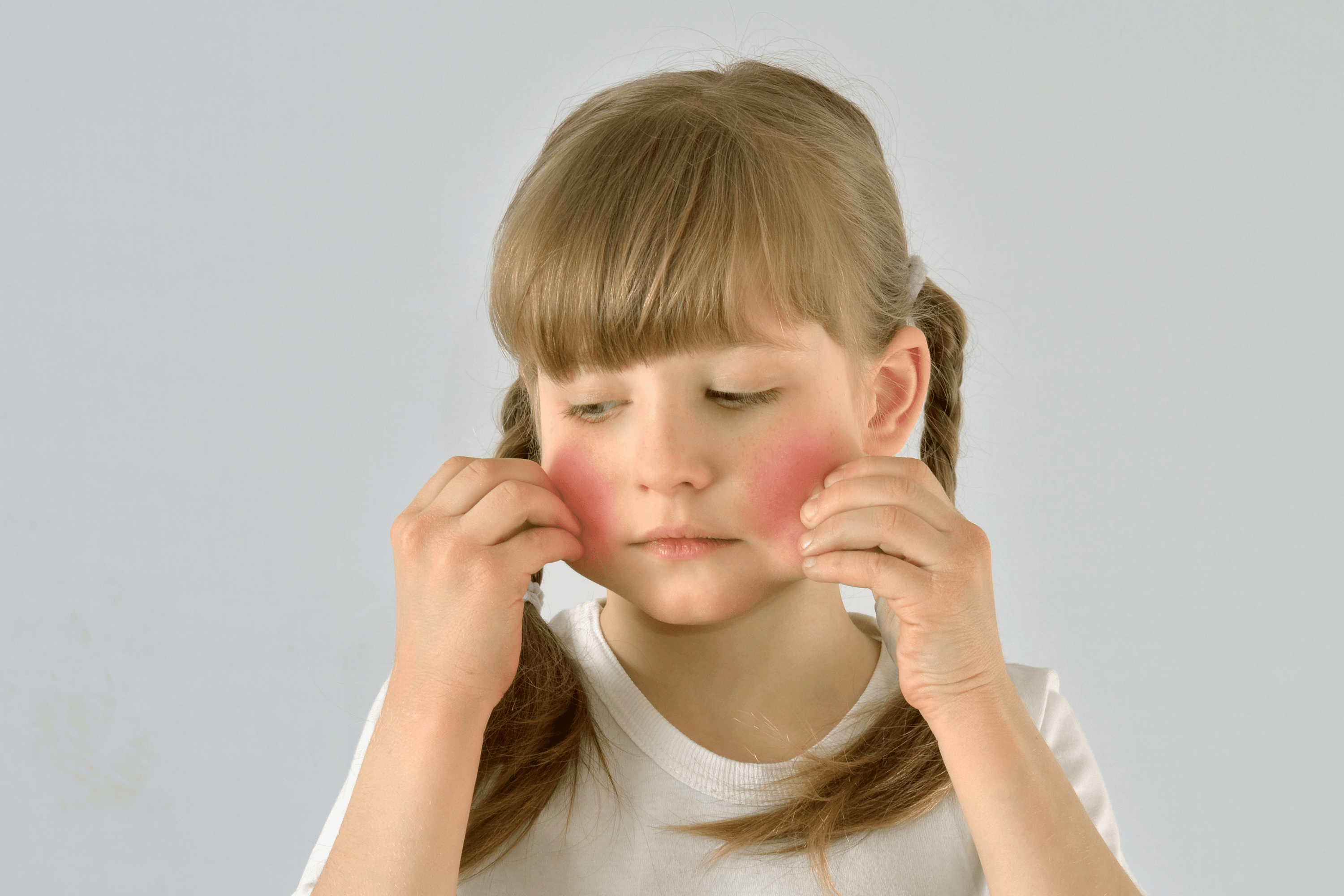
Understanding eczema in children
It is often somewhat worrying when one sees the skin of one's children weakened by incessant scratching or patches which may appear unexpectedly. In order to better understand this inconvenience of the skin, we explain to you, its symptoms and its causes.
Better understand eczema
Symptoms
Eczema is an inflammatory skin disease occurring mainly in children and infants from the age of 3 months with a particular genetic background otherwise called atopic.
It is manifested by skin dryness and itching all over the body, which persists even outside of the attacks. Thus appear red patches, sometimes vesicular which itch a lot. If these plaques are then scraped off, the vesicles on the surface of the skin can let out a liquid: the skin becomes oozing, scabs form and reveal plaques which are the expression of skin inflammation.

The different types
Atopic eczema:
There are two types of eczema, the most common is atopic eczema , also known as atopic dermatitis . Affecting nearly 15% of children in France, it is the 2nd most common skin disease after acne. 1
Contact eczema:
The other type of eczema is contact, or allergic, eczema . Less common, it is an inflammation of the skin caused by an allergic reaction after prolonged and repeated contact with substances that can pass through the skin. This skin irritation is triggered after the skin has been in contact with an allergen (perfume, preservatives, nickel, metals, plastics, soaps, detergents, etc.).
The 4 causes of eczema:
1 - Genetics
According to studies, 50 to 70% of children with atopic eczema have a parent who has had it himself. If one of the parents is affected then the child has a 50% chance of being affected and an 80% chance if both parents are affected. We speak of a predisposing atopic terrain . Atopic eczema can then be associated with other atopic diseases: allergic asthma, allergic rhinitis, allergic conjunctivitis, food allergies (1)… The result is a skin barrier deficient in lipids.
2 - Food allergens
Some foods are considered allergens (trophallergens). They are mainly found in nuts, cow's milk, cereals and eggs. The phase of sensitization to the allergen takes place during childhood or even during intrauterine life.
Maintaining a healthy lifestyle throughout pregnancy is important, these months of gestation will be decisive for the future of the developing child. At birth, the choice to feed her child artificial milk or breast milk also has an impact since through breastfeeding, a mother transmits to her child natural defenses important to the construction of his body.
3 - Environmental conditions
Allergens present in the environment cause an overproduction of IgE (Immunoglobulin type E). A reaction that takes place in 3 phases:- A sensitization phase = first contact with the allergen.
- A latency phase = development of IgE specific to this allergen.
- An effector phase = new contact between the preformed IgEs and the allergen resulting in an allergic manifestation.
The main allergens present in the environment are pollen, dust mites and animal hair. Depending on the season, pollution, environmental allergens (called pneumallergens) may be present in greater proportion. As soon as they are inhaled, they come into contact with the eyes or the skin and can cause reactions.
Another cause: extreme temperatures. Too hot they cause heavy perspiration, and very low they alter the hydrolipidic film of the skin creating dryness and itching. However, if the skin is well hydrated with a cream adapted to the weather conditions (sunscreen with heat and moisturizer when it is cold) it is then protected.
4 - Stress
Stress is not the main cause of eczema but it can trigger an attack or make it worse. However, it remains rare in children, where babies have fewer psychosomatic problems than adults. Eczema is mostly linked to atopy or allergies. 2
Sources
1 “ What is eczema? »2 " Eczema in children: what solutions to treat it?" »

